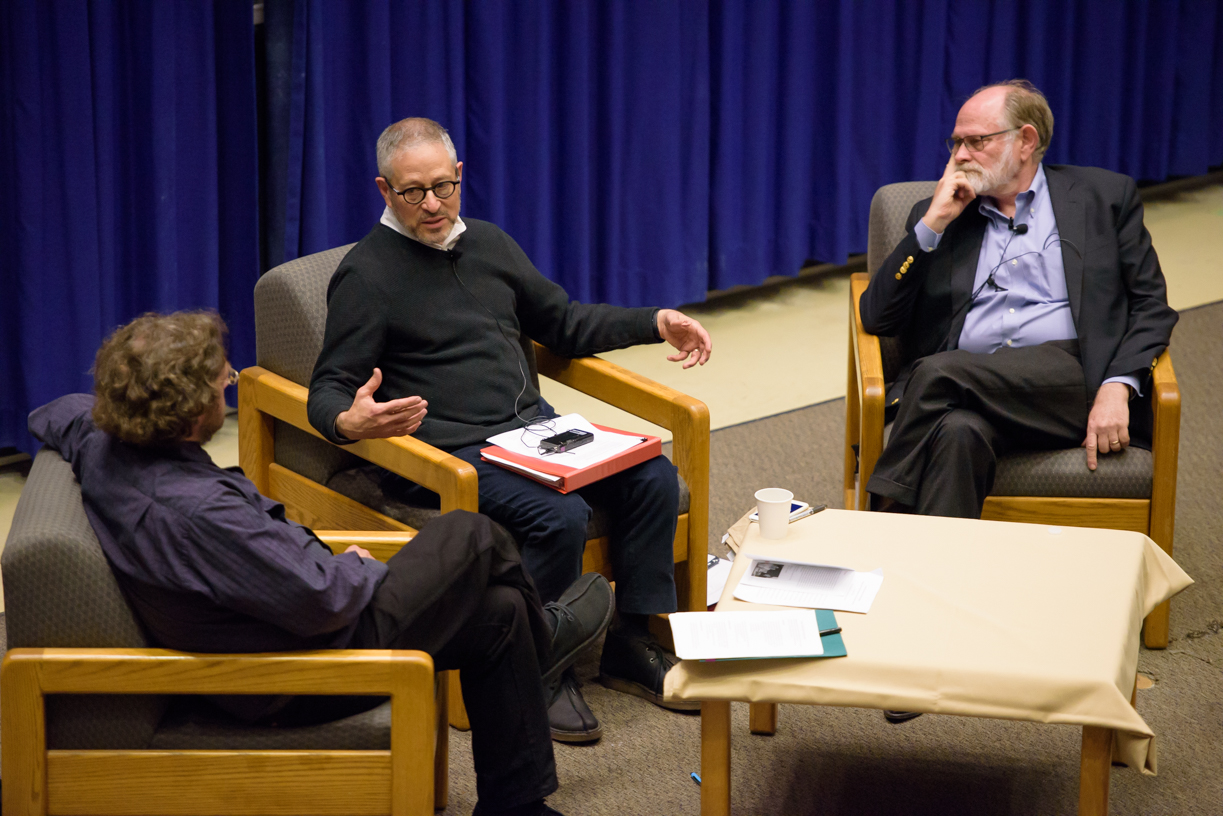How Should Religion Be Taught?
A recent book celebrates the ideas and career of Prof. Steve Wasserstrom.
It is rare for professors at small liberal arts colleges to have the sort of impact on their fields that Prof. Steve Wasserstrom [religion 1987–] has had on the study of religion. One reason for this is that faculty at small liberal arts colleges proudly put teaching before research—and in this particular, Wasserstrom is no exception.
But he has also published two field-changing books. In 1995 Between Muslim and Jew won a top honor from the world’s largest association of religion scholars—the Award for Excellence in Historical Studies from the American Academy of Religious Studies (AAR); and it has been recently reissued in the Princeton Legacy Library of Princeton University Press. He soon followed with another book that also changed the discipline, Religion after Religion: Gershom Scholem, Mircea Eliade, and Henry Corbin at Eranos (1999). So momentous was his book that the same year a panel at the 1999 AAR annual meeting was devoted to it and its implications for the study of religion.
“There seems to be an inverse relationship between the importance of religion in the world and the ability of the academy to talk about it,” notes colleague Prof. Kambiz GhaneaBassiri [religion 2002–]. “This was where Steve’s ideas came in and proved groundbreakingly useful. Religion, Steve suggests, is not sui generis but rather it’s a distinctive medium for people to talk to and relate to one another as well as their pasts.”
To celebrate Wasserstrom’s extraordinary career and mark his 30th anniversary at Reed, 13 of his former students as well as religion scholars from around the world convened a conference and contributed essays to a festschrift, All Religion Is Inter-religion: Engaging the Work of Steve Wasserstrom, edited by Kambiz GhaneaBassiri and Paul Robertson ’06. “When Steve’s former students gathered to honor him, they did so by critically engaging his ideas rather than idolizing him or remarking on his charisma,” Kambiz notes in his introduction.
The festschrift begins with an essay Steve once casually shared with GhaneaBassiri when they were preparing to coteach a course called “Theories and Methods in the Study of Religion.” He thought it would be useful in bringing GhaneaBassiri up to speed on his teaching philosophy. GhaneaBassiri was blown away; he knew that Wasserstrom wrote and researched for his own ends, but he couldn’t believe such a superb essay was languishing unpublished. “The number of these unpublished manuscripts on Steve’s shelves and hard drive is mind-boggling,” he says. He began to think of what might be done with the piece.
The essay, “Nine Theses on the Study of Religion,” puts forth the idea that all religion is inter-religion, meaning religion is always relational. There are no clear boundaries between religions. That is why the term religion is useful. It captures as the scholar’s object of study the ways specific religious traditions have historically developed in relation to one another. Embedded in the concept of religion are specific religions, such as Judaism, Buddhism, or Islam. It is plural, never singular, which is not the same thing as saying there are many different kinds of, say, Christianity or Buddhism. Rather, Wasserstrom observes that systems of belief do not exist in and of themselves, in isolated categories. They exist among people. Given this, he reconsiders religion as faith and posits that the role and responsibility of religion scholarship is to make sense
of the complex relations humans have maintained—both past and present—by appealing to the gods.
The conference given in Wasserstrom’s honor was organized around this provocation, and the festschrift follows suit. The idea that “all religion is inter-religion” forms the connecting thread and thesis of the essays, and each writer explores Wasserstrom’s theories through the lens of their own subfield and expertise.
To close the conference, Wasserstrom delivered a private talk to his current and former students and colleagues titled “Nine Riddles,” which the festschrift also includes as an epilogue. While “Nine Theses” argues for how religion should be taught, the riddles are a check on scholarly certainty. How could anyone ever know how religion ought to be studied? Nonetheless, he encourages his colleagues to continue the work. He says, “In so doing if you are very, very lucky (as I have been), you can make your students your teachers.”
